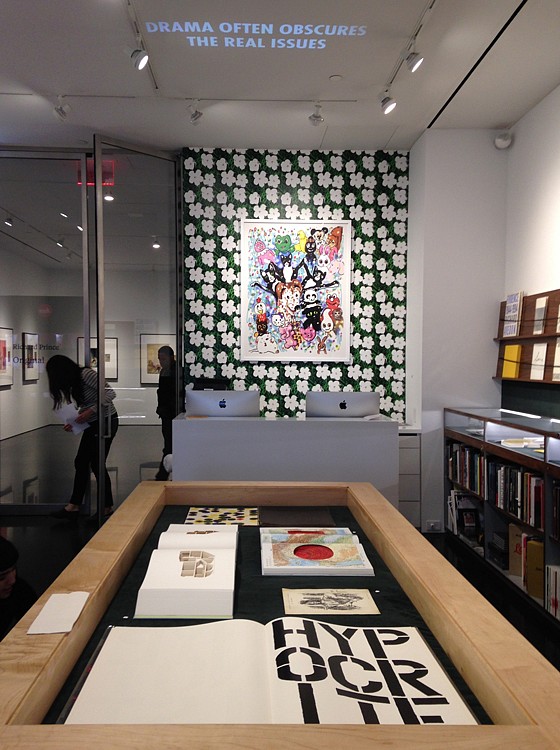PRESS RELEASE

We are delighted to present this inaugural exhibition of FIRSTbooks, celebrating the initial published works of 24 artists, spanning the years 1610 to 2015.
Oftentimes the most fascinating developments of an artist’s career occur at its beginning. In some cases, this emergence is captured in books. Books can contain an immediacy of energy rising from the immediacy of handling them. The viewer’s experience of a painting or drawing is limited to its location at any given time, whereas, depending on the extent of its publication, many people in many locations can enjoy a book widely and simultaneously. This shared intimacy is what makes artists’ books so very special for their creators, and their FIRSTbooks even more exhilarating.
An artist’s book departs from an art book. An art book is a catalogue or a monograph about the artist or artwork being presented. In contrast, an artist’s book is self-referential. It is a conceptual work of art that stands alone in its own right, conceived by the artist with intention.
There are diverse forms of artist-created books in the early modern era. In the 19th and early 20th centuries, the artist’s book was primarily an illustrated text. Scholars point to Edouard Manet’s illustrations for Edgar Allen Poe’s Le Corbeau (The Raven), 1875, as a paradigmatic example. Then there are Marc Chagall’s renowned etchings for The Bible that the artist began in 1931; they became a lifelong passion. That same year Pablo Picasso’s etchings were published in an edition of Ovid’s Metamorphoses. These early works generally used luxurious printing techniques such as etching, drypoint, lithography, aquatint, and mezzotint, and were printed on special paper.
By the middle of the 20th century, artists made books that focus less on their printing techniques and more on a premeditated idea or philosophy. For example, when Ed Ruscha made a small book comprised of photographs of gas stations shot during a trip to from Oklahoma to Los Angeles in 1962, the technique consisted of simple offset printing. His contemporary, Dieter Roth, using store-bought black and white papers and a knife, cut different size slots into 18 loose, square sheets, dispensing with a codex format and allowing readers to rearrange, shuffle, and orient the pages in whatever manner they wished (book aa, 1959). These artists were creating pieces of art that were somewhat replicable and could be readily distributed to a relatively larger audience than paintings or large-scaled sculpture, creating an accessible, democratic art form.
Moving into the 21st century, these lines between the artist’s book and an art book have become increasingly blurred as artists are assuming more agency in publications about themselves and their work. Christopher Wool is an archetypal example of this mode of creation. For his 2013 Guggenheim exhibition catalogue, Wool elected to add a series of black and white photographs to the front and back of the publication, bookending the book, if you will, with his artistic statement, and thus transforming an informational “art book” into a hybrid artist’s book.
The current exhibition is a tribute to the book as an artwork, to the artists who have shaped and molded their visual and/or linguistic material to create books, and to the publishers who have produced and distributed the powerful expressions of these artists.
We are proud to showcase this inaugural exhibition of FIRSTbooks at Gagosian, New York, a venue at which artists and their books are celebrated throughout the year. We invite you to enjoy, and watch for future installments in the FIRSTbooks series.


